

We may earn revenue from the products available on this page and participate in affiliate programs. Learn More ›
They’re beautiful. They’re available at nurseries and big-box stores. But they’re invasive plants, and they really should go. A plant is considered invasive if it’s not native to the region and spreads rapidly from the site of original introduction, with the potential to harm the environment, animals, insects, or people.
Many non-native plants are aggressive, but not all are invasive. Those that are invasive can crowd out native species, and, as result, destroy native ecosystems and biodiversity, threaten wildlife and insects, increase fire risk, decimate crops, negatively affect water quality, or cause structural damage. The effect and banning of non-native trees varies by state and region, so if you already have one of these in your landscape, check with local sources like extension offices for more information.
By definition, invasive species are difficult to eradicate. Here’s a list of some non-native and invasive plants to remove.
RELATED: The 15 Worst Invasive Plants in America
1. Bradford Pear tree (Pyrus calleryana)
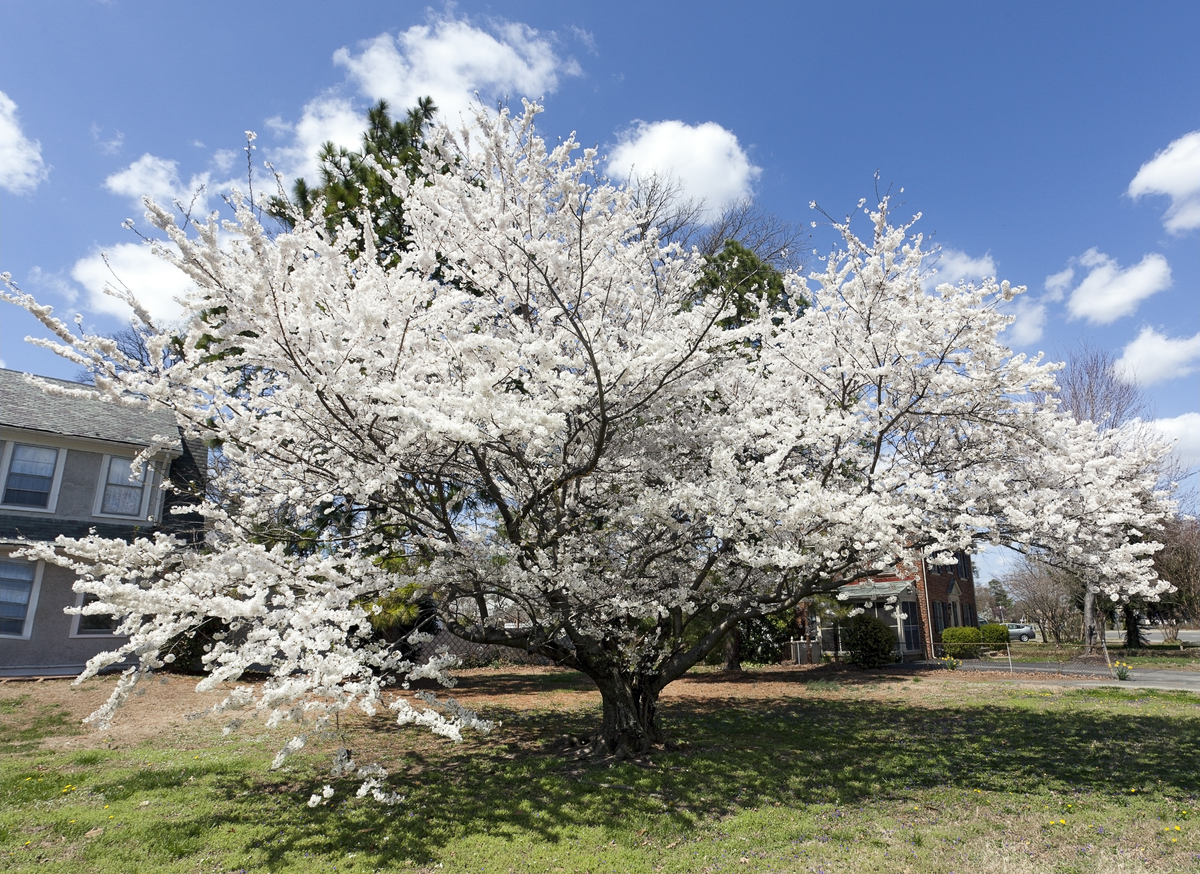
Bradford, or Callery, Pear, once a favorite landscape tree for its compact shape, rapid growth, profuse white early spring blooms, and spectacular fall foliage, is now banned in several states. Initial cultivars introduced from Asia were sterile, but smaller hybrids developed to overcome the fragile branch structure (known to split and break during storms, causing damage or injury) reproduce with other varieties.
Bradford pears don’t support wildlife, insects, or pollinators. They choke out native trees and plants, creating food deserts. Effective removal involves digging up the tree’s extensive root system and new shoots and suckers.
RELATED: 10 Trees That Spell Trouble for Your Yard
2. Burning Bush (Euonymus alatus)
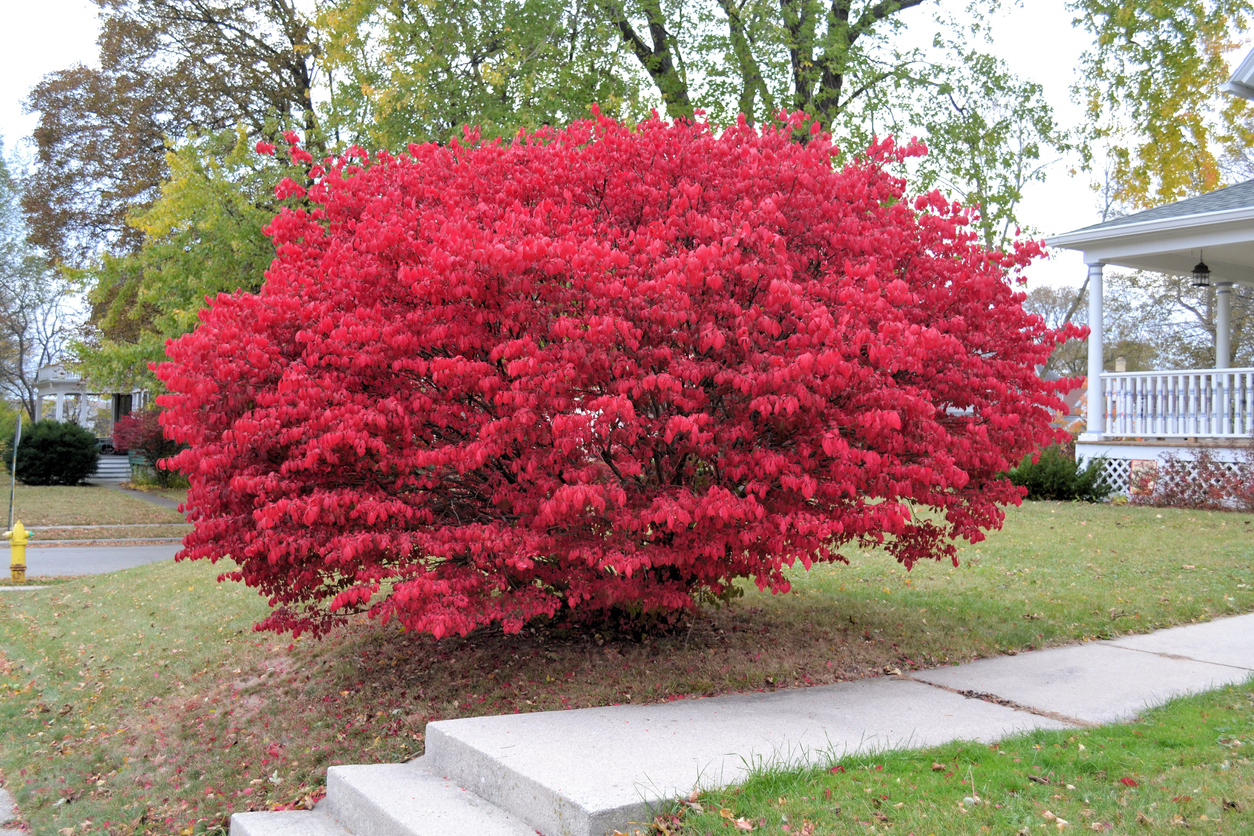
Fortunately, not all Burning Bush cultivars are invasive. The compact variety is not considered invasive; the Winged Burning Bush, identified by the brown “wings” that run along each stem, is an invasive shrub. Banned in some states, this low-maintenance ornamental woody shrub with fiery autumn foliage hails from Asia. Capable of growing up to 20 feet high, it forms a good hedge that can be pruned to size.
Burning bush spreads by dropping berries. The best removal techniques include either digging it out and disposing of the entire plant or cutting it down and killing the roots with herbicide. Select a native relative (Euonymus americanus or E. atropurpureus) of the exotic burning bush instead.
RELATED: 14 of the Most Dangerous Plants in America
3. Sweet Autumn Clematis (Clematis terniflora)
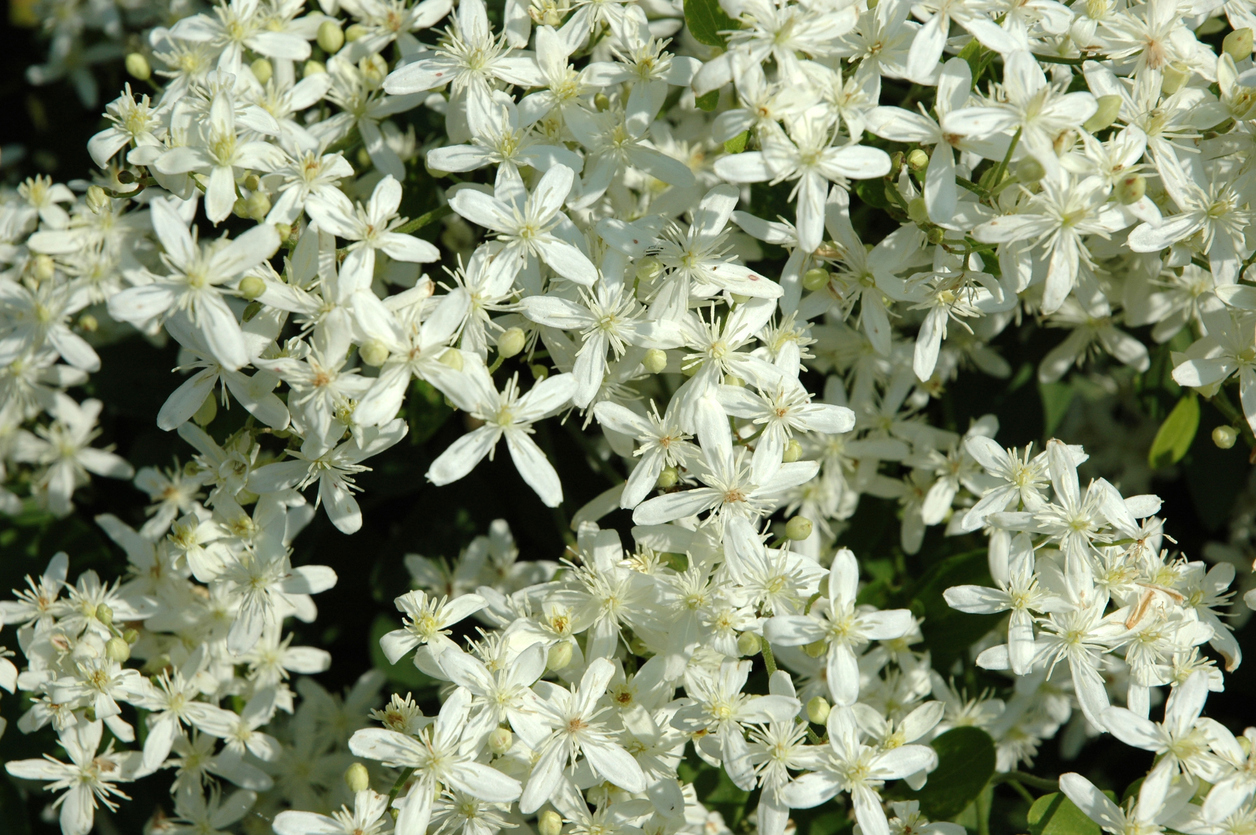
This vigorous vine produces massive clusters of tiny white, intensely fragrant flowers in the fall. Categorized as an exotic plant from Asia with a high invasion risk, Sweet Autumn Clematis sends out an abundance of seeds that are dispersed by the wind, enabling them to sprout far away from the parent plant, where sprawling new plants can cover and smother native plants and even fully grown trees. If the plant is too big to dig up, it can be removed by cutting back and applying herbicide.
RELATED: 10 Climbing Plants That Are Easy to Keep Under Control
4. Tree of Heaven (Ailanthus altissima)
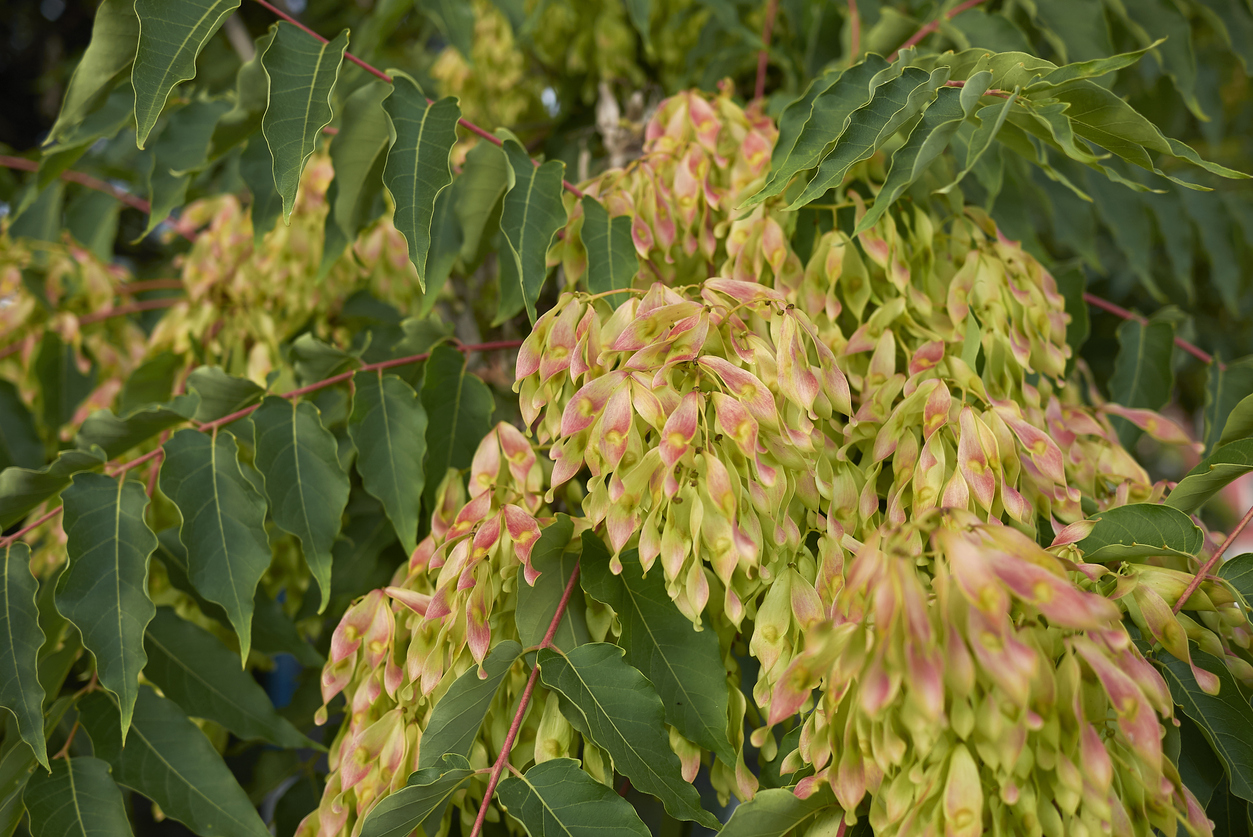
Another Asian invader is the Tree of Heaven, also called Chinese sumac. In addition to rapid growth and reproduction through masses of seeds, this tree secretes a toxic chemical into the soil, killing surrounding plants. With no natural predators, it soon forms a dense thicket that chokes out native species. Capable of living in poor soil with little water, Tree of Heaven is a habitat for the spotted lanternfly, a destructive invasive insect that feeds on native fruit-bearing trees. Its aggressive root system can damage pavement, pipes, and building foundations. To remove, cut it as close to the ground as possible and apply herbicide.
RELATED: What Is Companion Planting and How to Use It in Your Home Garden
5. Butterfly Bush (Buddleja davidii)
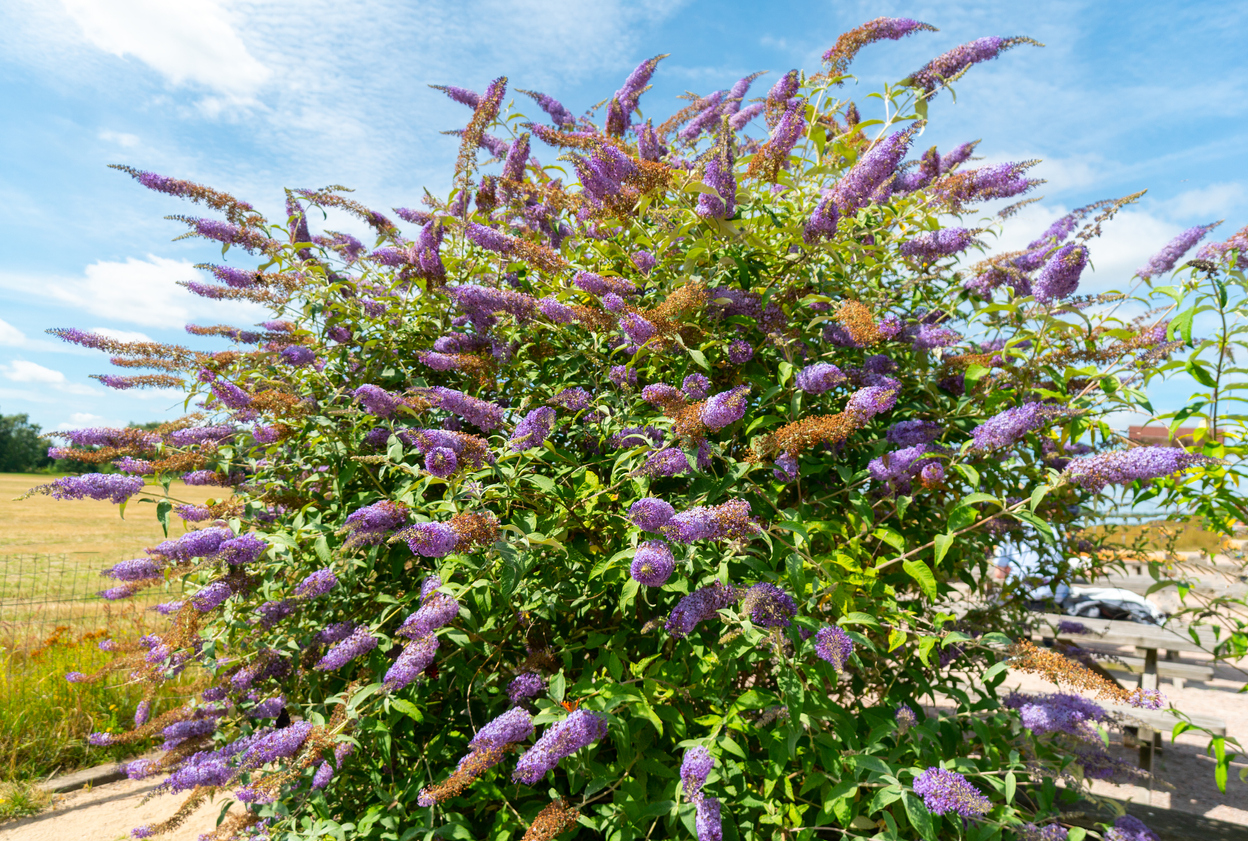
Despite its name, this deciduous woody shrub from Asia does little to support butterflies because not a single native caterpillar can use it as a host plant (although it does attract adult butterflies). Fast-growing, this large, attractive shrub spreads by distribution of seeds from the numerous tiny flowers that make up each fragrant, cone-shaped cluster.
In the wild, butterfly bush crowds out native plants, some of which provide habitat and food for caterpillars, and is invasive throughout the Pacific and Atlantic Coast states. To eradicate it, all of the roots must be removed. It can then be burned or placed in the garbage.
RELATED: 15 Flowers That Attract Butterflies
6. English Ivy (Hedera helix)

This aggressive Eurasian vine can quickly climb buildings and trees, causing damage to both. It can also spread on the land as a ground cover. When it climbs into the forest canopy, it obscures tree foliage from the sunlight, rendering the host tree incapable of photosynthesis. The added weight can weaken a tree and make it more likely to be blown down by the wind. This perennial vine produces seeds that can be dispersed by birds to new areas. It can be removed by pulling it up by the roots and disposing of it.
RELATED: How to Kill Ivy
7. Privet (Ligustrum)
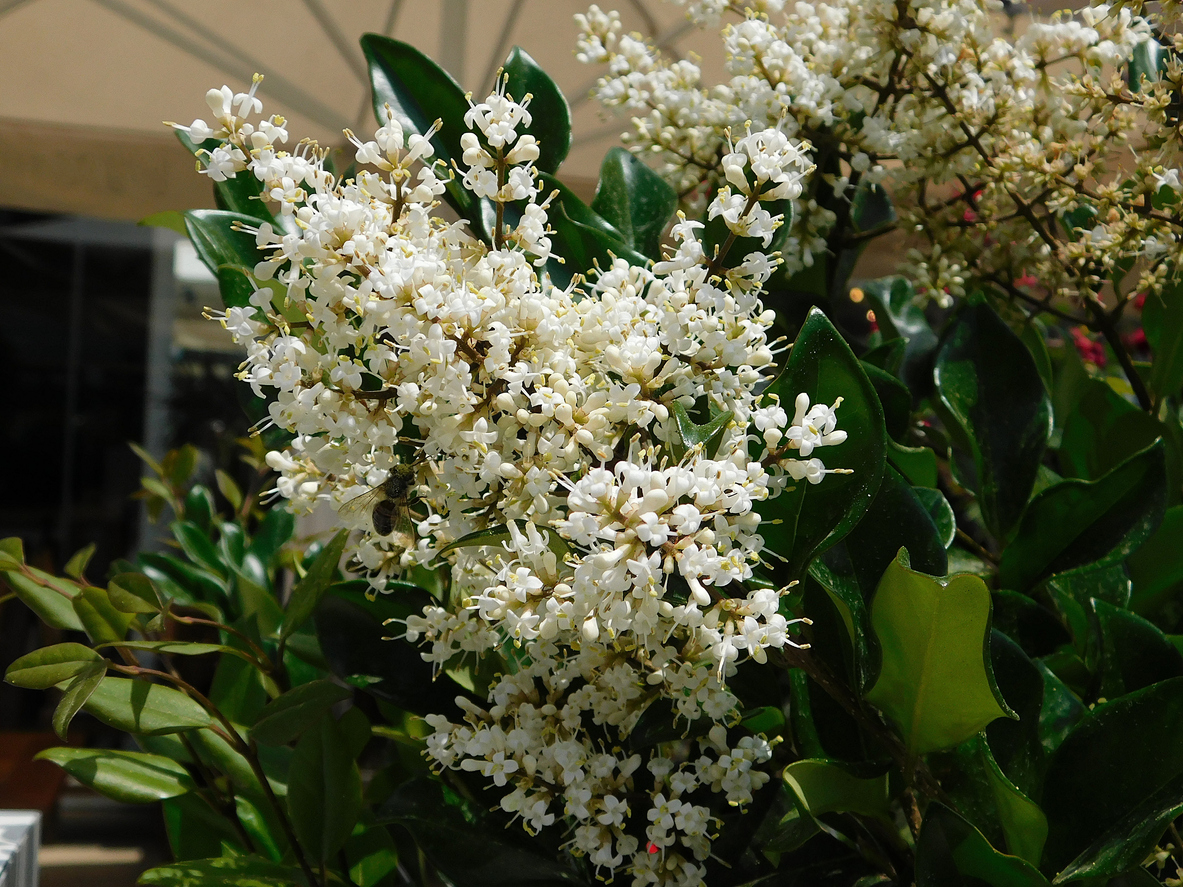
There are several varieties of privets that are invasive. This rugged semi-evergreen grows well in almost any soil and conditions, tolerates pollution, and responds well to pruning, which is why it’s commonly used as a hedge. Fast-growing and self-seeding, it produces large clusters of white flowers in the summer and purple or black berry clusters in winter, the seeds of which birds disperse. Able to grow to 50 feet, it crowds native plants that attract pollinators. To remove privet, pull out small plants or cut down large ones and apply an herbicide. Continue removing shoots as they appear.
RELATED: The 15 Best Trees and Shrubs to Grow for Backyard Privacy
8. Japanese Barberry (Berberis thunbergii)
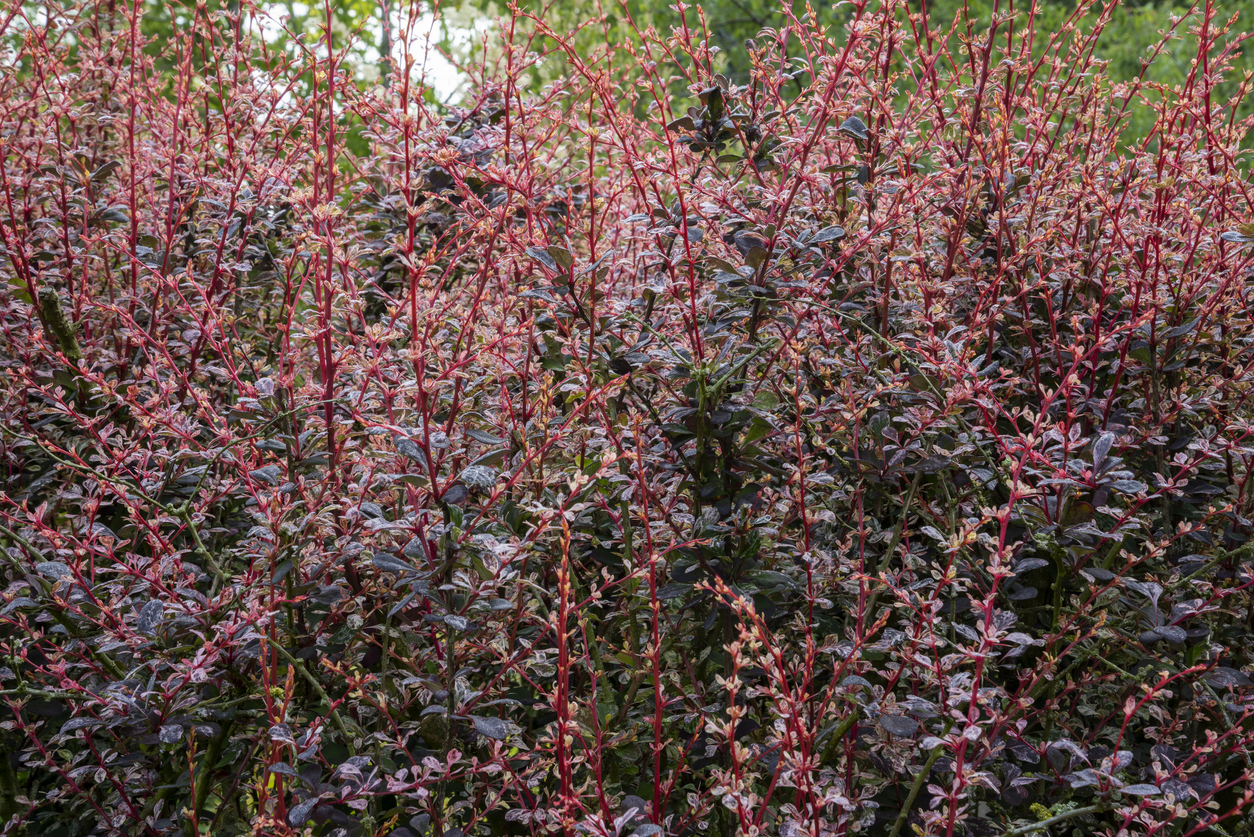
Often used as a small hedge because its thorns deter deer, Japanese barberry is a deciduous shrub available in several colors (red, orange, purple, yellow) and variegated hues of spoon-shaped leaves. Compact and dense, it will root wherever its branches touch the ground. The plant also spreads by birds dispersing its red winter berries.
As it spreads, barberry displaces native plants and is considered invasive in and around the Northeast U.S. It also alters the chemistry of the soil, turning it more alkaline. The best way to remove Japanese barberry is to pull out the entire plant and its roots, which are shallow, but will resprout if left in the ground.
RELATED: Boost Your Home Security by Adding These Thorny Plants to Your Landscape
9. Japanese spirea (Spirea japonica)
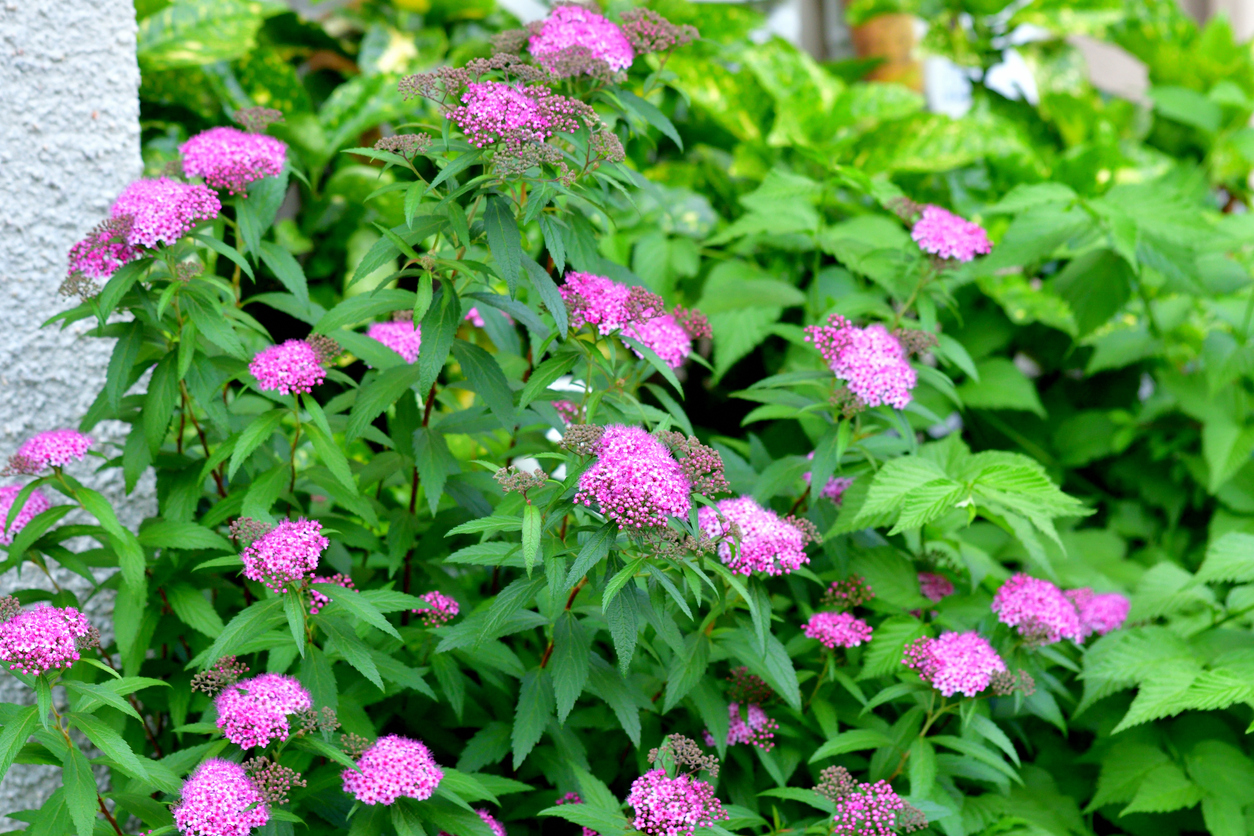
This small deciduous shrub often sold as a foundation plant is prized for its clusters of pretty pinkish-lavender spring flowers. However, Japanese spirea can quickly overtake native plants as it spreads to fields, forests, stream and river banks, and roadsides. Each plant produces hundreds of tiny seeds that remain viable for years and are easily spread by wind, water, or fill dirt. Additionally, rapid growth results in dense stands that shade native plants.
Mowing down the plant will not eradicate Japanese spirea; it will come back in force, and cutting branches back before seeds appear is not always effective. For best results, use an herbicide to stop Japanese spirea from returning.
RELATED: 17 Drought-Tolerant Plants That Can Survive Dry Spells
10. Japanese Honeysuckle (Lonicera japonica)
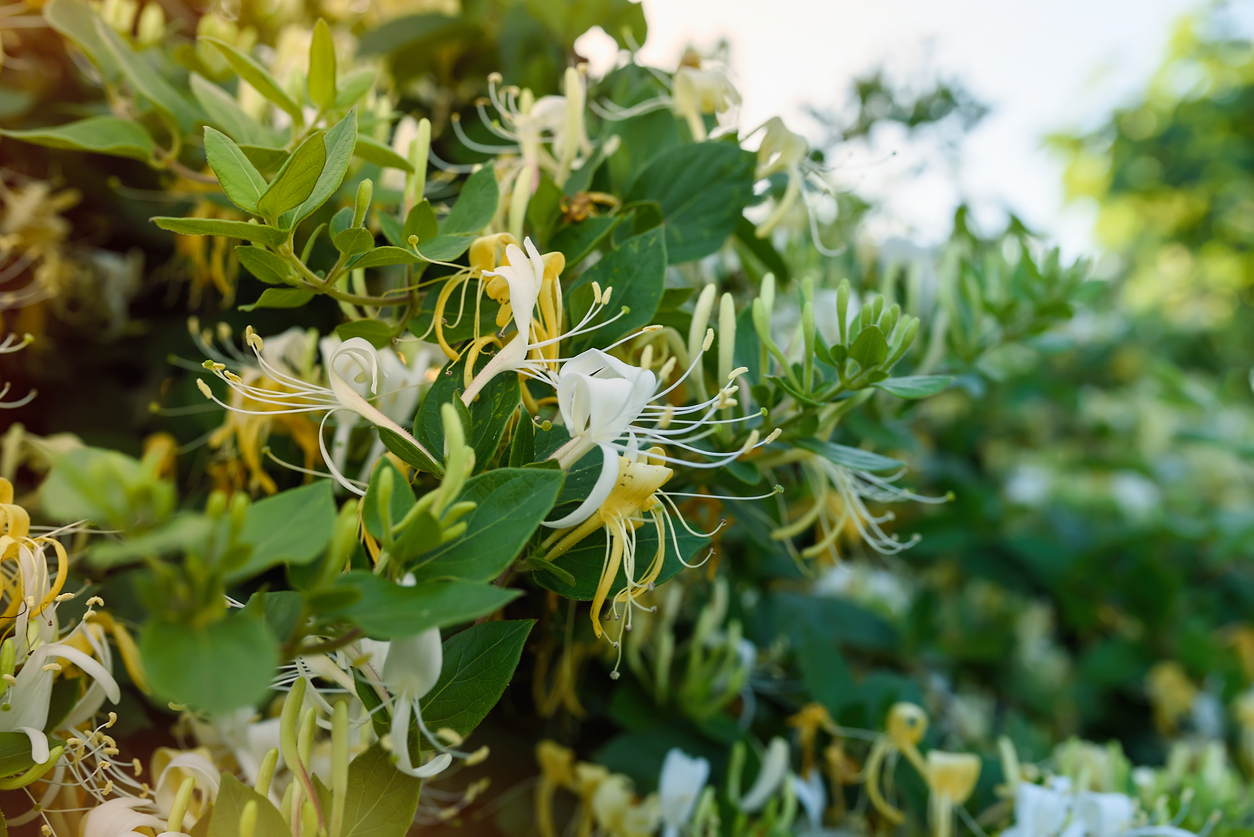
This vigorous, woody vine bears fragrant long-lasting white tubular flowers from June to October. Capable of thriving in shade and dry soil, honeysuckle is extremely aggressive and can grow in dense mats on the ground or wind around tree trunks, girdling them. Spreading quickly, vines can climb 50 feet into the canopy, their weight crushing trees and shrubs under them.
In addition to suffocating other plants, mats of honeysuckle block the light. Small plants can be pulled out by the roots, but bigger, more established vines should be cut back to the ground before applying an herbicide to the stumps.
